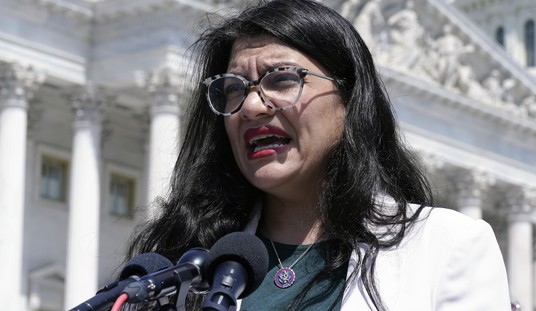A German financial journalist triggered attacks on an American hunter by some of her fellow “animal rights” cultists that have included death threats against the hunter.
Respected German journalist and animals rights activist, Silvia Wadhwa commented on a mundane picture of Argys’s daughter and housecat recently by linking to the picture of the mountain lion – sending the photograph viral and sparking the vitriol.
‘I posted a photo of my daughter with her recently adopted housecat on our local Humane Society Facebook page,’ said Argys.
‘The next thing I knew, this Silvia person commented on and posted a link to my personal page with a photo of my mountain lion. I have no idea how she found me.’
Argys said that the comment in question referred to her mountain lion photograph she uploaded last year and said, ‘Sadly, you don’t love ALL cats, Madame.’
The photo was then reposted to animal rights groups and anti-hunting forums such as the International Animal Rescue Foundation World Action – where Argys received a barrage of criticism.
…
‘They were calling me horrible names. They were saying they wanted to kill me, they wanted to see me dead, they called me fat, they called me ugly, they called me the B-word, they called me the C-word,’ said Argys to CBS.
‘There really wasn’t anything they weren’t willing to call me and to say.One comment reads, ‘The only answer is to take out these psychopaths. Problem solved — animals saved.’
Another comment calls for ‘an eye for an eye.’
And another, ‘You are a disgrace to those of us who respect life, human and animal. I’d love to hunt YOU and hang YOUR head on my living room wall.
I’ve known a few anti-hunters in my time. Many will happily put down their burger or chicken nuggets so that they can point their finger at you and tell you how “inhumane” you are as a hunter. Wadhwa is no different.
Wanna go hunt a lion next, UDO? Bring it one! We’re ready …. #Artenschützer #Thüringen #udo wedekind pic.twitter.com/l1Agnf82QW
— Silvia Wadhwa (@EuroWadhwa) February 1, 2014
The reality is, however, that these holier-than-thou types like Wadhwa rarely pay more than lip service to herd management, habitat preservation, and other conservation efforts. It is hunters that do more to preserve game species that anyone else.
The U.S. Fish and Wildlife Service answers the question Wadhwa doesn’t want people asking, “What do hunters do for conservation?”
A lot. The sale of hunting licenses, tags, and stamps is the primary source of funding for most state wildlife conservation efforts.
By respecting seasons and limits, purchasing all required licences, and paying federal excise taxes on hunting equipment and ammunition, individual hunters make a big contribution towards ensuring the future of many species of wildlife and habitat for the future. By paying the Federal excise tax on hunting equipment, hunters are contributing hundreds of millions of dollars for conservation programs that benefit many wildlife species, both hunted and non- hunted.
Each year, nearly $200 million in hunters’ federal excise taxes are distributed to State agencies to support wildlife management programs, the purchase of lands open to hunters, and hunter education and safety classes. Proceeds from the Federal Duck Stamp, a required purchase for migratory waterfowl hunters, have purchased more than five million acres of habitat for the refuge system (2005 statistics only); lands that support waterfowl and many other wildlife species, and are usually open to hunting.
Local hunting clubs and national conservation organizations work to protect the future of wildlife by setting aside thousands of acres of habitat and speaking up for conservation in our national and state capitals.
The simple fact of the matter is that the American model of wildlife management is the world’s most successful, and it relies upon hunting as a core part of the conservation of species.
As early settlers made their way West, North America’s wildlife populations diminished due to market-hunting and habitat loss. Many species were on the brink of extinction. Elk, bison, bighorn sheep, black bears—even whitetail deer—had all but disappeared across the country. Hunters and anglers realized they needed to set limits in order to protect what they loved and assume responsibility for the stewardship of our natural resources.
Hunters like Theodore Roosevelt and George Bird Grinnell rallied fellow sportsmen. They pushed for hunting regulations and established conservation groups to protect habitat.
Basic Principles
Their efforts are the backbone of the North American Wildlife Conservation Model. The model has two basic principles – that our fish and wildlife belong to all Americans, and that they need to be managed in a way that their populations will be sustained forever.
The principles of the North American Wildlife Conservation Model are explained more fully through a set of guidelines known as the Seven Sisters for Conservation.
Sister #1 – Wildlife is Held in the Public Trust
In North American, natural resources and wildlife on public lands are managed by government agencies to ensure that current and future generations always have wildlife and wild places to enjoy.Sister #2 – Prohibition on Commerce of Dead Wildlife
Commercial hunting and the sale of wildlife is prohibited to ensure the sustainability of wildlife populations.Sister #3 – Democratic Rule of Law
Hunting and fishing laws are created through the public process where everyone has the opportunity and responsibility to develop systems of wildlife conservation and use.Sister #4 – Hunting Opportunity for All
Every citizen has an opportunity, under the law, to hunt and fish in the United States and Canada.Sister #5 – Non-Frivolous Use
In North America, individuals may legally kill certain wild animals under strict guidelines for food and fur, self-defense and property protection. Laws restrict against the casual killing of wildlife merely for antlers, horns or feathers.Sister #6 – International Resources
Wildlife and fish migrate freely across boundaries between states, provinces and countries. Working together, the United States and Canada jointly coordinate wildlife and habitat management strategies. The Migratory Bird Treaty Act of 1918 demonstrates this cooperation between countries to protect wildlife. The Act made it illegal to capture or kill migratory birds, except as allowed by specific hunting regulations.Sister #7 – Scientific Management
Sound science is essential to managing and sustaining North America’s wildlife and habitats. For example, researchers put radio collars on elk to track the animals’ movements to determine where elk give birth and how they react to motor vehicles on forest roads.
Anti-hunters like Silvia Wadhwa are great at spurring on hate. What they don’t do is put their money with their mouths are to preserve game species the way that hunters do.
* * *
It isn’t lost on us at Bearing Arms that anti-hunters also seem to be targeting women hunters in specific for ridicule and abuse.
I’m not sure if it is simply because they cravenly assume that they can get away with bullying female hunters easier than they can male hunters, but if they think that is a winning strategy they are sadly mistaken. Hunting has become very popular among young women, and shows no signs of stopping. New companies have hit the market that cater expressly to female sportsmen, and existing companies have added and expanded to their product lines featuring items tailored for women.
Fighting for the rights of hunters to pursue their sport is just one facet of our continuing battle for the right to keep and bear arms.









Join the conversation as a VIP Member